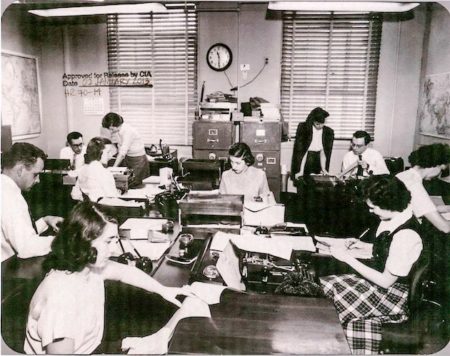Anyone familiar with Allied clandestine operations during World War II (e.g., British-led Special Operations Executive – SOE, Gen. de Gaulle’s Bureau Central de Renseignements et d’Action – BCRA, and America’s Office of Strategic Services – OSS) is aware of two things: first, women were used as undercover agents operating behind enemy lines and many of them were very successful. (Alas, too many female agents were executed by the Germans or killed in the line of duty.) Second, after the war, these women were either abandoned by their agencies or forced to work in pre-war job assignments (e.g., secretarial). Many of the former female field agents’ male bosses felt threatened, especially when the man had no field experience. Those attitudes held back many talented women who believed (and rightfully so) they had not only proved themselves but could contribute even more to a post-war world.

It was a “man’s world” back in those days and this was especially true in the world of espionage. Six years after the formation of the Central Intelligence Agency (CIA), a group of women had a meeting with the agency’s new director, Allen Dulles (1893−1969), for the purpose of determining his attitude toward roles of women working for the CIA. During the meeting, they asked the director three pointed questions. (Soon after, a senior CIA manager called these women, the “Wise Gals.”) The outcome of this meeting was the formation of a thirteen-member panel to study the issues raised earlier. This group of women became known as the “Petticoat Panel.” Read More The Petticoat Panel

